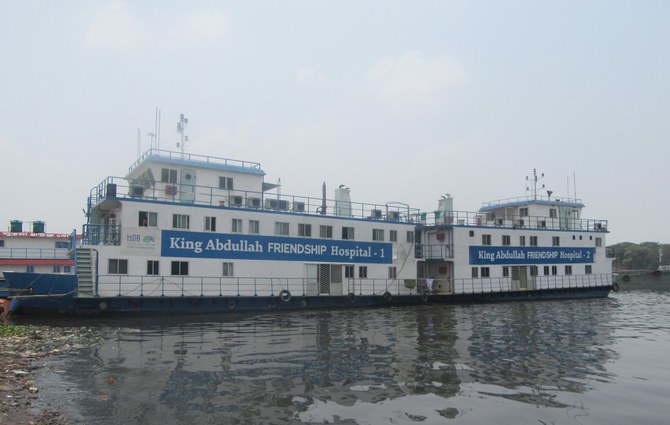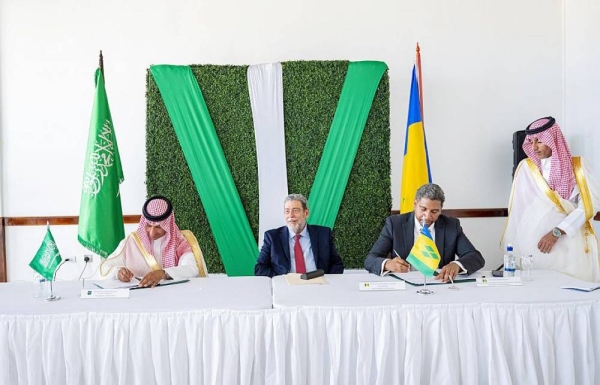
DHAKA: Five Saudi-funded floating hospitals will bring healthcare to tens of thousands of patients in remote areas of Bangladesh, with their operator expecting the first two vessels to be launched shortly after Ramadan.
Bangladesh occupies the world’s largest delta, and a third of the country is under water most of the time. Devastating storms often form over the Bay of Bengal and flood the country’s south, leaving many regions accessible only by river.
Few of these rural areas have medical facilities and the five hospital ships, all named after King Abdullah and funded by the Islamic Development Bank, will traverse the waterways of Bangladesh to provide healthcare to impoverished communities.
Under a 2017 agreement signed by the bank and the Bangladeshi Directorate General of Health Services, the floating hospitals will be initially operated by Friendship, an NGO that has been running hospital ships in Bangladesh for over two decades. After that, the vessels will be handed over to health authorities.
“It’s a tripartite project,” Dr. Sheikh Daud Adnan, head of hospitals at the health directorate, told Arab News.
“The project is for five years, and during this time the ships will run under the supervision of Friendship. After five years, the ships will be handed over to the directorate.”
The cost of building the ships and the first five years of operation is about $20 million. Two of the vessels are already complete and ready to sail, pending registration with Bangladeshi authorities, which Friendship expects to be finalized soon after Ramadan.
“Our people are ready and we have already trained our staff. Everything is ready. I hope the first two ships will float by June or even before,” Runa Khan, the NGO’s executive director, said.
“All the ships will be named after King Abdullah. They will run as King Abdullah Friendship Hospital 1-5.”
The vessels have been built in the Narayanganj shipyard, about 20 km from the Bangladeshi capital Dhaka.
The biggest ship, King Abdullah Hospital 1, is 31 meters long, and has an operating theater for general surgical operations and a separate theater for eye surgery. The other four ships will be 25 meters long, and will provide primary healthcare and minor operative procedures.
The hospital ships lwill run on the Padma River, the Meghna River in the northeastern district of Sunamganj, and in the southeastern regions of Hatiya.
Each ship will have up to 30 crew — more than half of them medical professionals, and the rest responsible for running the vessels and administration. During the duty period, all will stay on board in their residential cabins.
Each ship will anchor in a particular location for two-and-a-half months. The hospital crew will have a database of patients prepared in advance by paramedics on the ground, Khan said.
“In order to maintain a smooth follow-up and registration, we have community medics or satellite clinics at every location where the ships will anchor..
“These are all mobile clinics. Every month, we conduct mobile clinic services where paramedics attend to the patients. The paramedics refer the patients to our ship hospitals if they can’t treat them. This is how we have the database of the patients to be treated before the ship reaches the particular area,” Khan said.
She estimated that each hospital ship, supported by the mobile clinics, will treat up to 350,000 people every month.
Services will be almost free of charge, as the ships will visit areas lacking medical facilities and where many cannot afford the journey to access proper healthcare.
“We do this almost free of cost. The charge is within 10 US cents,” Khan said.
“They can’t go to healthcare facilities. Healthcare has to reach them. With the river system, we can reach these people easily.”












